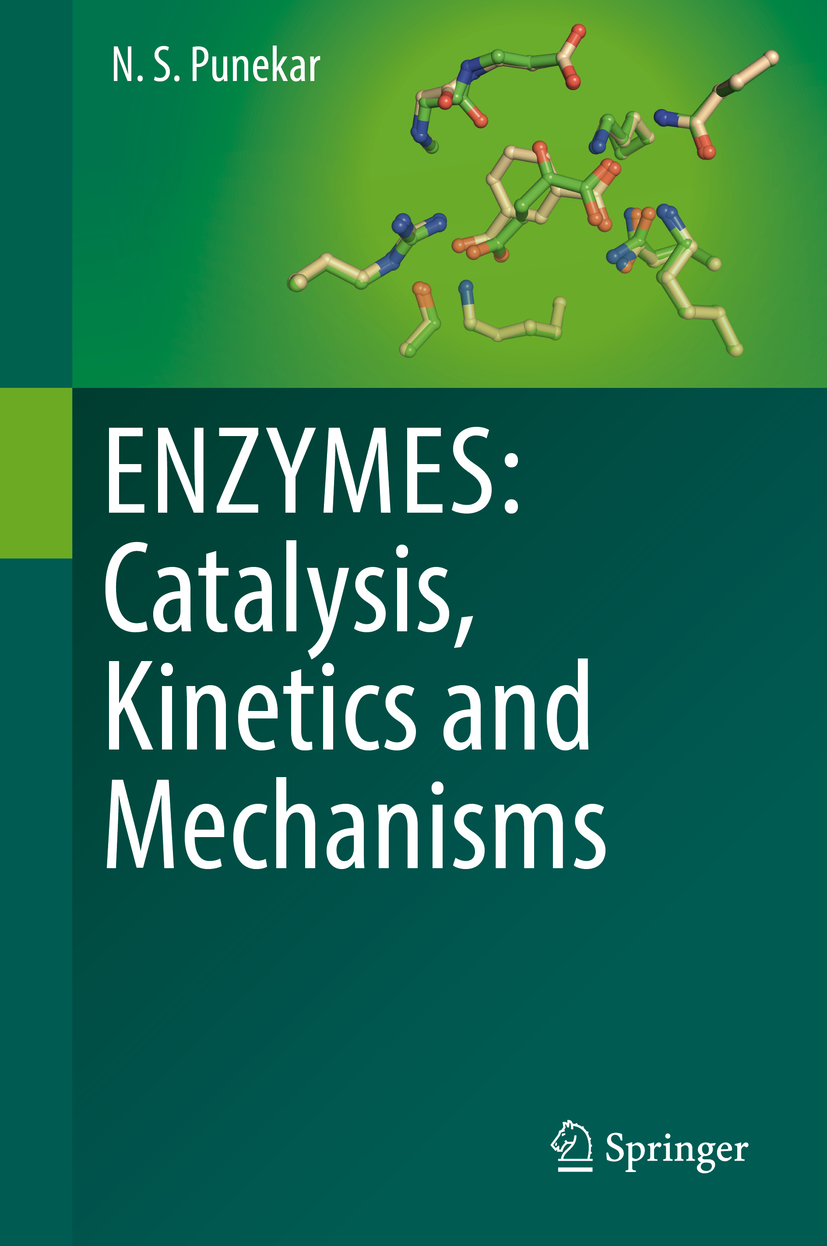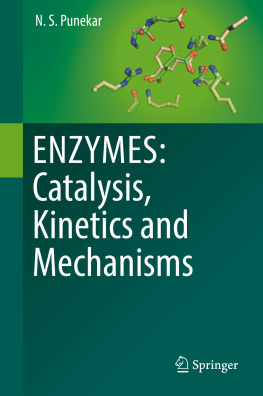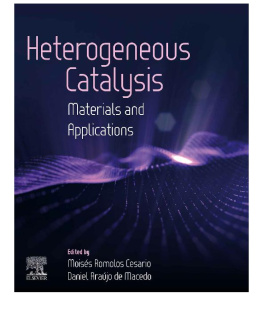N. S. Punekar - ENZYMES: Catalysis, Kinetics and Mechanisms
Here you can read online N. S. Punekar - ENZYMES: Catalysis, Kinetics and Mechanisms full text of the book (entire story) in english for free. Download pdf and epub, get meaning, cover and reviews about this ebook. year: 0, publisher: Springer Singapore, genre: Children. Description of the work, (preface) as well as reviews are available. Best literature library LitArk.com created for fans of good reading and offers a wide selection of genres:
Romance novel
Science fiction
Adventure
Detective
Science
History
Home and family
Prose
Art
Politics
Computer
Non-fiction
Religion
Business
Children
Humor
Choose a favorite category and find really read worthwhile books. Enjoy immersion in the world of imagination, feel the emotions of the characters or learn something new for yourself, make an fascinating discovery.
- Book:ENZYMES: Catalysis, Kinetics and Mechanisms
- Author:
- Publisher:Springer Singapore
- Genre:
- Year:0
- Rating:4 / 5
- Favourites:Add to favourites
- Your mark:
- 80
- 1
- 2
- 3
- 4
- 5
ENZYMES: Catalysis, Kinetics and Mechanisms: summary, description and annotation
We offer to read an annotation, description, summary or preface (depends on what the author of the book "ENZYMES: Catalysis, Kinetics and Mechanisms" wrote himself). If you haven't found the necessary information about the book — write in the comments, we will try to find it.
ENZYMES: Catalysis, Kinetics and Mechanisms — read online for free the complete book (whole text) full work
Below is the text of the book, divided by pages. System saving the place of the last page read, allows you to conveniently read the book "ENZYMES: Catalysis, Kinetics and Mechanisms" online for free, without having to search again every time where you left off. Put a bookmark, and you can go to the page where you finished reading at any time.
Font size:
Interval:
Bookmark:


This Springer imprint is published by the registered company Springer Nature Singapore Pte Ltd.
The registered company address is: 152 Beach Road, #21-01/04 Gateway East, Singapore 189721, Singapore
For
Sandhya, Jahnavi, and Chaitanya
Any living being is a reflection of its enzyme arsenal. We are and do what our enzymes permit.
Christian de Duve
Enzymes are the lead actors in the drama of life. Without these molecular machines the genetic information stored in DNA is worthless. With rising attention to the fashionable fields like molecular biology, genetic engineering, and biotechnology, the techniques to manipulate DNA have occupied center stage. Being popular, many concepts of molecular biology/genetic engineering are now introduced to undergraduates. Unfortunately, this has happened at the cost of other fundamental facets of biology, including enzymology. In the excitement to collate volumes of data for Systems Biology (and the various Omics fashions), the beauty and vigor of careful analysis one enzyme at a time is neglected. It is an intellectual challenge to assay individual enzymes while avoiding complications due to others an almost forgotten activity in modern biology. Many in the present generation assume that performing one standard assay will tell you everything about that enzyme. While biochemists spent lifetimes on a single native enzyme, the notion today is that one can characterize a mutant in the morning! Over the last three decades devoted enzymologists have become a rare breed. Many Biology teaching programs have expanded in the areas of molecular and cellular biology while they manage with a makeshift enzymology instructor. New students who are attracted to the study of enzymes do exist, but they find themselves in a very bleak teaching environment. Not surprisingly their numbers are dwindling. Reservoirs that are not replenished may soon run dry.
Genes for enzymes are routinely fished out, cloned, sequenced, mutated, and expressed in a suitable host. Characterizing the mutant enzyme, however, requires a thorough mechanistic study both chemical and kinetic. It is thus an exciting time to do enzymology. Hopefully, this book provides enough basic exposure to make this happen.
The ease with which sophisticated data are collected nowadays has dispirited the slow and burdensome approach of resolving and reconstituting a complex enzyme system. Micro-arrays that measure the transcription of many genes at a time disclose neither the abundance nor any attributes of the enzymes/proteins they encode. As F.G. Hopkins wrote in 1931 .. the biochemists word may not be the last in describing life, but without his help, the last word will never be said. This is true of enzymology as well. While the interest and expertise in teaching/learning enzymology has declined exponentially, working knowledge of enzymology remains indispensable. Enzymes have come to occupy vast areas of modern biology research and the biotechnology industry. Enzymes whether used as popular kits, mere research tools, or for their own sake require a minimal appreciation of their workings. A tome on enzymology that focuses and logically connects theory of enzyme action to actual experimentation is desirable. One objective of this book is to bridge this gap and enable students to understand, design, and execute enzyme experiments on their own.
Enzyme study can range from the simple to the most complicated. Approaches that can be performed in a modest laboratory setup and with no fancy equipment are needed. Conveying the excitement of enzymology within a modest budget and with few experiments is desirable. And hence, equipment intensive approaches such as structural enzymology, sophisticated techniques like X-ray, NMR, ESR, fast reactions, and isotope effects have received a somewhat limited coverage. Readers interested in them will yet find sufficient background material here.
Reasons for the cursory coverage of enzymology in most contemporary biology academic programs are twofold. Over-emphasis and glamorization of molecular biology (later genetic engineering!) in the last few decades has captured a disproportionately large allocation of resources and time. Secondly, as a cumulative effect of this attitude, very few well-trained specialists in enzymology are available today. Therefore, study material that encourages students/researchers to understand, design, and execute experiments involving enzymes on their own is needed. The contents of the present book are expected to serve this purpose.
Most biochemistry and molecular biology students are introduced to enzymes as commercial reagents and as faceless as buffers and salts. This has led to inadequate appreciation of enzymology and its practices. Standards for reporting enzymology data (STRENDA; available at http://www.strenda-db.org ) are a recent effort to prescribe the best approaches to generate and report enzyme data. With an ever-increasing reliance on genomics and proteomics, enzymes are no longer isolated and/or assayed for activity. Often their role is inferred from sequence data alone. Molecular biology falters when it ignores the chemistry of the products of DNA blueprint enzymes the protein catalysts of the cellular machinery. This philosophy was beautifully reiterated by Arthur Kornberg in his Ten Commandments of Enzymology ( J Bacteriol . (2000) 182:36133618; TIBS (2003) 28:515517). The present book is an attempt to sift through chemical sophistication and simplify it for an audience with a biology background. It will serve the curricular needs of senior undergraduates and postgraduates in Biochemistry, Biotechnology, and most branches of modern biology.
Font size:
Interval:
Bookmark:
Similar books «ENZYMES: Catalysis, Kinetics and Mechanisms»
Look at similar books to ENZYMES: Catalysis, Kinetics and Mechanisms. We have selected literature similar in name and meaning in the hope of providing readers with more options to find new, interesting, not yet read works.
Discussion, reviews of the book ENZYMES: Catalysis, Kinetics and Mechanisms and just readers' own opinions. Leave your comments, write what you think about the work, its meaning or the main characters. Specify what exactly you liked and what you didn't like, and why you think so.











